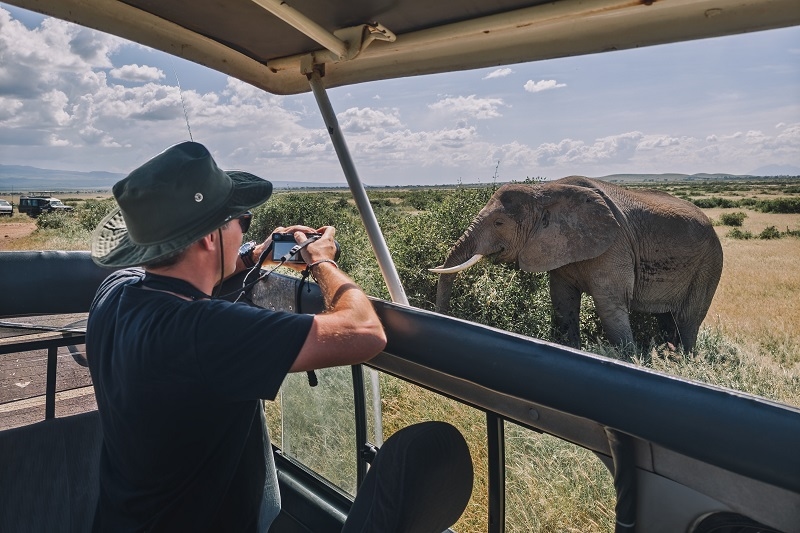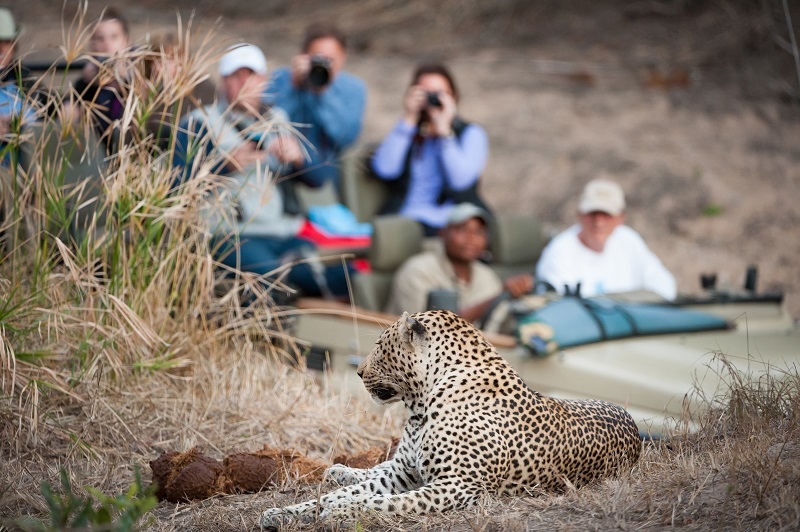
For those with great love for wildlife photography, Africa is a fantasy destination. The continent provides some of the most amazing vistas and animal encounters on earth thanks in part to its expansive savannahs, dramatic deserts, rich forests, and varied animal life. There is no better location to photograph wild beauty in its purest form whether you are an experienced photographer or a novice trying to create your portfolio.
Planning advice, regional highlights, and vital gear recommendations for your next trip are all covered in this guide, which also investigates the best national parks in Africa for wildlife photography.
From the famous big five creatures—lion, leopard, rhino, elephant, and buffalo—to cheetahs, giraffes, zebras, hippos, and a stunning diversity of birds, Africa's protected areas support an unrivaled species range. These creatures roam wild in large natural habitats; therefore, photographers may capture raw and real events.
The natural lighting, open landscapes, and golden hours of African dawns and dusks also make it perfect for nature photography enthusiasts.
Let's look at the best parks by area with great picture possibilities:
Action-packed wildlife scenes define Masai Mara. Every year, it organizes the Great Migration, when over two million wildebeests and zebras traverse the Mara River—an unforgettable experience for any photographer.
Why it's perfect:
Photography Advice:
The Great Migration happens in the Serengeti, which is kind of like the Masai Mara, but to the south. You can see loads of different animals there all year. It’s seriously the place to go if you're into African photography.
Here's why:
Tips in Photography:
Among the most easily reached and well-kept African parks is Kruger. Popular with photographers, both amateur and professional, it presents a great spectrum of lodging and self-drive choices.
Reasons it's great:
Photography Tips:
For wildlife photos, Etosha's enormous salt pans and bleak scenery provide a one-of-a-kind environment. Animals gather around waterholes during the dry season; hence, forecasting and photographing their movements is made simpler.
Why it would be perfect:
Photography Tips:
For picture mountain gorillas, there is no better location than Bwindi. No other experience is trekking over thick rainforest to catch the delicate faces of these primates.
Why it's perfect:
Photography Advice:
Chobe is well-known for its vast elephant populations and boat-based excursions down the Chobe River. Shooting from the water gives new angles and fresh viewpoints.
Why it's perfect:
Photography Techniques:

This park is another great location for photographing gorillas in the wild. It is simpler to reach than Bwindi and provides somewhat shorter hikes.
Reasons it is perfect:
Tips on Photography:
When taking pictures in the wild, your choice of equipment may have a significant impact. Although talent is the most important, using the best cameras for safari guarantees better quality results.
Main camera characteristics to look for:
Suggested designs right now are:
For lenses, a 100–400mm or 200–600mm telephoto is perfect. Combine it with a 24–70mm lens for landscape or group animal photographs.
Going on a photo safari experience in Africa calls for careful preparation. This fundamental advice will get you ready:
Best visibility and animal concentration close to water sources during the dry season from May to October
Wet season (November–April): Reduced tourists, lush surroundings, great bird photography
Local guides are frequently photographers themselves. They can set up automobiles for the best light and angle, understand animal behavior, and know the best times and locations.
Driving hours, drone use, and off-road driving all have rules unique to each park. At all times respect the environment and wildlife.
Top wildlife photography parks by area are reviewed swiftly here:
East Africa:
Southern Africa:
Central Africa:
Every area has its own attraction, and the perfect park varies depending on the species of wildlife and scenery you want to capture in images.
Understanding how weather and lighting affect your images is one of the most critical components of good wildlife photography in Africa. Early mornings and late evenings are brilliant light for wildlife photos; midday sun casts stark shadows. In your photographs, cloudy days can actually improve mood and detail. You have to be prepared for rapid weather changes, particularly during the wet season.
Your equipment will stay dry thanks in part to lens hoods, waterproof bags, and protective gear. Knowing your light will significantly affect wildlife photography in national parks in Africa when photographing quick-moving animals or wide vistas.
Shooting wildlife in Africa's national parks? It's an experience that's hard to beat. The excitement and scenery are just on another level. You'll find photo opportunities at every turn, from huge herds on the Serengeti plains to quiet moments with mountain gorillas.
Going on an African photo safari is not just a trip; it's about capturing stories with your camera. If you're respectful of wildlife, pack smart, and plan things out, you’re sure to bring home some seriously awesome photos and memories you'll never forget.
This content was created by AI